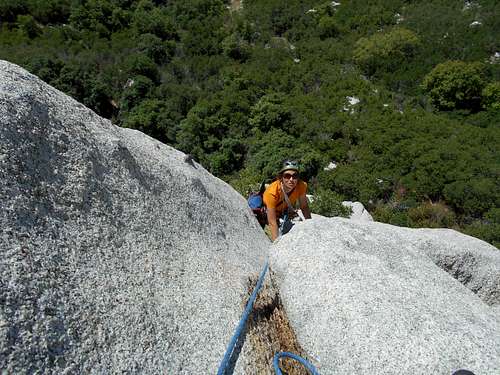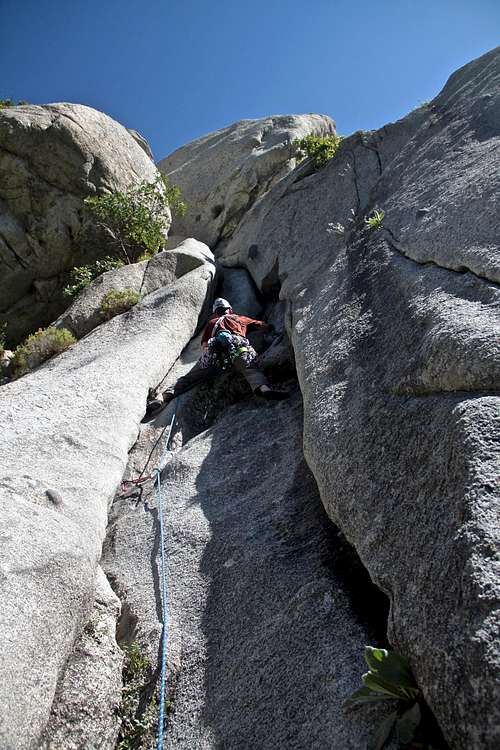-
 7641 Hits
7641 Hits
-
 79.04% Score
79.04% Score
-
 10 Votes
10 Votes
|
|
Route |
|---|---|
|
|
Hiking, Trad Climbing |
|
|
Spring, Summer, Fall, Winter |
|
|
Less than two hours |
|
|
5.7 (YDS) |
|
|
2 |
|
|
Overview
Little Cottonwood Canyon is located to the south of Big Cottonwood Canyon, and so named because of its length and width are "littler".
The Little Cottonwood Canyon has long been the destination of climbers from around the US. The canyon is mostly comprised of granite. Many of the major routes in Little Cottonwood were established in the early 1960s, and some are associated with famous names, including Fred Beckey, Layton Kor, and Royal Robbins. The Lowes - George, Greg and Jeff came to the prominence through the rest of the 60s and early 70s.
Crescent Crack is located on Crescent Crack Buttress, which is named for the obvious crescent-shaped crack on its main wall. This crag is very popular, with a short approach (5-10 min), sunny cliffs and some of the canyon's best routes.
Getting There
Little Cottonwood Canyon is located only 15 miles from Salt Lake City.It can be reached by taking the 6200 South "Canyons" exit from I-215. Continue east to the canyon on U-210 following signs for ski areas Snowbird and Alta.
Drive up the highway 0.3 mile from the highway junction at the canyon mouth and park at the "Park and Ride area". A well worn trail begins at the NE corner of the parking lot. Follow the trail through forested area, past some boulders, take a left at the intersection. About 5 minutes of hiking will bring you to the base of Crescent Crack Buttress.
Route Description
Crescent Crack - one of the best 5.7s in the area. It follows the crescent shaped crack.Pitch 1: 50 meters longs. It starts as angling groove into a chimney. Continue past chimney, trees, a couple of mantle moves will get you onto a small ledge with fixed anchors (just below another chimney). It is well protected, beautiful rock, nice hand jams.
Pitch 2: 35 meters long. Start in a slightly angled flaring chimney, a few awkward moves will get you above this crux. I believe it is harder for larger people who cannot fit well in. The chimney is protected with large camps - bring one #4 and one #3. Mountain Project has a big discussion about rating this chimney, some people suggesting even 5.10 rating? I don't think so, but be prepared for a few awkward moves. Luckily, the chimney is very short. Follow the crack above the chimney, very nice climbing, much easier ground here. There are 2 fixed pitons on this pitch. Traverse on the slab past the 2nd piton to the right. Descent would continue further right and down, rappel just a few meters below.
Descent: Scramble down to climber's right and you have choice either rappel from fixed anchors, or to continue scrambling down and right (between Crescent Buttress and The Coffin)
Rappel: you need 2 sixty meter ropes. We did it in 3 rappels with first rappel being a single rope rap, and for the following 2 rappels we used 2 ropes. The first anchors are little hard to spot - you need to down climb a little bit on class 3-4 terrain, there were no difficulties with finding other rappel stations.





